|
When a sporting great is ‘in the Zone’ it’s an experience of pure athletic alchemy. All the doubts thrown up by the conscious mind disappear, allowing all the long years of practice to soar back out in a blissful moment of apparent magic. This is when things just work – indeed the outer world seems to cooperate with every inner whim. At extremes, time obliges by slowing down. Space can also flex as you become one with your equipment, your surroundings and even the entire universe. No matter how pressured the occasion or how huge the crowds, it’s usually a peaceful experience too, hence the spread of techniques like meditation to help sportspeople find this elusive nirvana when it matters. Over seven years of research for In The Zone I met hundreds of legends of everything from athletics to boxing, gymnastics to skydiving. For most, the secret is to find calm amid all the intensity. Yet there are exceptions, and the most high-profile of all comes from sailing. ‘They’ve made me angry and you don’t want to make me angry…’ These words, paraphrasing David Bruce Banner in 1970s television’s The Incredible Hulk, capture much of what makes the greatest sailor in Olympic history tick. Ben Ainslie is a rare example of a sportsman who thrives on getting mad and usually even. You’d imagine Denmark’s Jonas Høgh-Christensen might have known that. Six races into the Finn class of the 2012 Olympic sailing regatta, with Ainslie chasing a record fourth straight gold, the Dane had beaten him in every race. Then he ganged up with Dutchman Pieter-Jan Postma to force the home hero into a precautionary penalty turn. Big mistake. After Ainslie threatened to turn green, he began another stunning run for gold. Maybe Høgh-Christensen should have listened in on my chat with the Briton a month earlier… ‘Normally when I’m under pressure or I get angered by something, it seems to bring out the best in me,’ Ainslie told me. ‘I don’t necessarily know why that is. But it’s a good trait to have because that’s what often happens. For some people, if they get put off their natural stride they just fall apart. But anger works as a trigger for me. It just makes me want to do better or try harder and normally that’s the case.’ Ainslie first got ‘angry’ when he was herded to the back by Brazil’s Robert Scheidt in the penultimate race of the 1996 Olympics. Then something ‘clicked’ in the young debutant, who started flying as he seethed, gaining 15 places but falling short of gold – for the only time, as it turned out. Ainslie received death threats when he returned the favour four years later but ‘from then on the gloves were off…’ Anger management course? No thanks… it is Ainslie’s preferred route to the Zone. Competitive sailing is so tactical it is rarely about just getting as quickly as possible from A to B by sea, yet even this game of maritime chess doesn’t stop the magic. ‘That peak performance comes when everything comes together at the same time, when you’re really at one with the boat, the conditions and yourself,’ adds Ainslie. ‘It doesn’t happen often, but when it does it’s a great feeling. It’s definitely possible to get in the Zone in a tactical battle too. That’s when the training comes in and you sail the boat on autopilot because your mind is so focused on the tactical ramifications of what you need to do next. You might not sail at 100 per cent but you can be at a very high level even without thinking about it.' The Briton has already won the America’s Cup once, having sparked one of sport’s all-time great comebacks as tactician for Oracle Team USA in 2013. His home nation has never matched the feat in 173 years of attempts, despite its long-time claims of ‘ruling the waves’.
Ainslie has himself led British teams twice before without success but this week he is finally aiming to rectify that, skippering the Ineos-backed Britannia in a best-of-13 series against reigning champions Team New Zealand in Barcelona. How revved up is he already feeling at the prospect? Funnily enough Ainslie is known for his placid personality on dry land; it’s only the sea that fires him up. Yet he insists age and experience have blurred the edges between his Jekyll and Hyde. ‘When I was younger I was a bit of a hothead on the water,’ adds Ainslie, ‘but on land I was so shy I wouldn’t speak to anyone – partly because of the problems I had at school, where I was bullied. That had a marked effect on me: I felt I needed to prove myself and it made me fiercely determined to be successful. As I’ve got older the two personalities have merged. Now I’m more confident on land and I’m calmer on the water, which helps.’ After decades of sailing solo, Ainslie acknowledges the biggest challenge in the team environment is getting everyone to peak at the same time. ‘It’s no good an individual trying to do one thing on this own ten times better than the rest,’ he adds. ‘It’s a collective output so it’s about getting everyone working together to a similar level where they can all operate. Then you start getting somewhere.’ One final piece of advice for Team New Zealand: try not to make them angry.
0 Comments
If we want to understand the power of dreams – and how greatness always starts in our own heads – the all-time greats of sport provide all the evidence we need.
The world’s most decorated Olympian Michael Phelps collected 28 swimming medals over a record-shattering period lasting a day shy of 12 years. Of those, 23 were gold: he won his first on this day (August 14) at the 2004 Athens Games and his last in Rio on August 13, 2016. The foundation to his success was a brutal training schedule of countless repetitions – averaging seven miles a day, 365 days a year. Phelps started young too, spending his early years permanently around a pool. By the age of 11 he was swimming two and a half hours every day. He was just 15 when he made his Olympic debut at Sydney in 2000, reaching the 200-metre butterfly final but missing the medals. Just months later he broke that world record and the deluge began: his total now tops the entire collection of over 150 Olympic nations. The American was fortunate to grow up into the perfect physique for swimming – a long trunk and a wide arm span – but it’s in his head that he shines brightest. Such a staggering, history-altering career would never have come to fruition if Phelps hadn’t worked tirelessly to create vivid images of his races in advance, then steer his future accordingly. Thanks to rigorous mental training with coach Bob Bowman he learned to write his goals down, specifying each target time to a hundredth of a second. Even in his early teens he soon found himself hitting them precisely. ‘I started visualising when I was about 14,’ Phelps tells me in the book In The Zone. ‘It was all about thinking how a race could go, how you want it to go and how you don’t want it to go so you’re ready for anything. I found it could really help me to prepare. Visualisation is important so you don’t have any surprises. That means you can always stay relaxed. That was a big key in everything we did. Starting it at a very young age really helped me throughout my career.’ Visualisation is not just about being prepared for anything, it’s about shaping the future to fit the mould of your private vision. The greats start with a big vision, then they map out their route towards it by dividing it into smaller, more manageable goal-sized images. It helped that Phelps was also taught never to believe in limits. As such he always dreamt big, not settling for gold alone: ‘It’s crazy when I look back on my career because to me it feels like I’ve been living a dream come true,’ he smiles. ‘This is everything I thought about and dreamt of as a kid. It’s like: “This is real?” And it’s wild. Everything I’ve been able to accomplish is something I’ve always wanted and I’ve done everything I ever wanted to achieve. I wanted to change the sport of swimming and take it to a new level – and I have.’ Before his racing retirement Phelps, now a father to Boomer, started a foundation aimed at promoting water safety: ‘I still swim, but now it’s more for peace of mind. But there is still a lot I want to achieve. Spending time with kids is a passion of mine. Putting a smile on a kid’s face and seeing them having fun always puts a real smile on my face too. Now I want to help kids accomplish their dreams.’ The fact these successful ‘dream achievers’ are so keen to share out the secret is a lesson in itself… One thing the greats can’t help but learn en route to the top is that we are not merely passive beings being battered around the universe. Now they are desperate for the rest of us to realise we all - without exception - have the power within us to shape our own future. So where will your dream take you? Click here to hear more about the power of visualisation in Clyde Brolin’s interview on the BBC Radio 2 Breakfast Show with Chris Evans - five years ago today It was a treat to visit the studios of Premier League Preview earlier this week to talk about the climax of the 2021-2022 season. Focusing on Manchester City's match away at West Ham on Sunday, we talked about how Pep Guardiola calls on the power of belief to turn in such an impressive string of strong performances when it matters.
The London Stadium has been a happy ground for Manchester City in recent years but this time the pressure is magnified as they aim to get over the line in the title race - potentially with a makeshift defence after a run of injuries. West Ham also head into the match on the back of a European semi-final disappointment of their own so they will be looking for a high at their last home game of the season. Make no mistake: when you get this close to a title it's ALL about the mind. But if either team needs any more inspiration they can think back to all the peak performances at the very same stadium 10 years ago at the 2012 Olympics - as described by the likes of Jessica Ennis-Hill and Usain Bolt in the pages of In The Zone: How Champions Think and Win Big. You can watch the final cut today on BT Sport at 6pm or Sky Sports at 7pm. ‘There is so much untapped potential in people it’s just incredible. It’s almost beyond belief, really. I feel it and I sense it through what I’ve experienced in my own journey. I’m from a humble beginning but the message of my story is that great things grow from small things.
'The magic lives inside every one of us, despite our environment, our struggles and our doubts. It takes courage to realise what that magic is, then to actually go out and try to achieve it. It’s the power of loving yourself, I suppose, and giving yourself a chance.’ In my years of researching the human being at the limit for In The Zone I’ve been privileged to meet over a hundred of the world’s biggest sports stars. But every now and again one of them sends me away with my head swimming. This time it is Australia’s national treasure Cathy Freeman, who has just summed up this entire book in a hundred words. The magic of elite performance is that it always starts out small: with a dream. By nurturing it, crafting it and loving it, sport’s champions show us all the untapped power of the human mind. When we believe in what we conceive, the Zone can guide any of us to achieve anything. And it’s not just about sport. More than simply a cliché, the Zone is the mental state required to perform at our own absolute limit in any field. This is the home of ‘genius’: where artists are at their most creative, where musicians produce their most sublime performances, where scientists make their breakthroughs. This doesn’t stop with the stars. Whether you’re a teacher, a chef, a nurse or an astronaut, if you’re taking an exam or cracking jokes in a pub, to find the Zone guarantees you hit your absolute best. You may not even recall how or why it went so right. Put simply, it all goes like a dream. The Zone can kick in at every level from a kickabout in the park to the World Cup Final. It is just a blissful state where all internal chatter disappears and we truly go with the flow. We assume conscious thoughts drive us on, but it is when we give our subconscious free rein to do its natural thing that we truly shine. That often leads to a performance at the maximum of our potential, albeit beyond what our conscious minds ever imagined possible. This limit rises in proportion to the hours of practice in the bank and the intensity of the occasion. Blend the Zone with supreme ability and a packed, expectant arena and you get fireworks. This book features plenty of those but the good news is that we all have enough spark to match any of them, if only we take the trouble to live the dream. ‘The great achievers, winners, inventors, musicians and painters have all been great dreamers,’ says mind coach Don MacPherson. ‘What’s exciting is that anyone can visualise. We can use it in life’s everyday challenges like school exams or a driving test. If you have to make a best man’s speech, first picture your audience in as much detail as possible, using all your senses: sight, hearing, smell, touch. See yourself delivering your speech feeling relaxed and confident. Hear the audience laughing and clapping, then coming up to congratulate you. ‘These mind movies turbo-charge your confidence because the subconscious doesn’t know the difference between the real thing and something imaginary. Like all skills, the more you practise the better you get. But your brain loves a target so give it a big one like a great success. When you have it burned into your subconscious mind, switch focus to the process by visualising how you’re going to get there, step by step.’ This book draws on the testimony of the cream of the world’s brightest dreamers and most focused schemers to show we all have a chance to be a magician. Anyone with a dream can follow these greats all the way to the top of the world by setting their mind unflinchingly on their own specific quest. How do champions think? They don’t. The original dream comes not from the head but the heart: conceive. No matter how long it takes, they don’t think they can, they know they can: believe. Finally, to truly peak they stop thinking at all: achieve. We all have this potential if we can stop suppressing it ourselves or believing others who haven’t yet learned this universal truth. When we finally pay dreams the attention they deserve, the payback is a sea change in everything from self-belief to self-discipline, self-knowledge to self-esteem. Then a realisation dawns that buried within each of us is the power to make any dream come true, even if the process may initially seem more of a nightmare… This extract is from In The Zone: How Champions Think and Win Big, out now The Olympics start tomorrow and elite athletes all over the world are dreaming big. For five long years they have dedicated their entire existence to Tokyo, regularly picturing the view as their national anthem sings out to a packed arena.
This is the justification for decades of focus on a single target: every early morning, every mile run through wind, hail and snow, every vomit-inducing gym session. All the pain will make sense when they reach the top of the world. Right? Pity few enjoy this golden pay-off. The rest will fail – very publicly – in full view of their family, friends, nation and planet. That is guaranteed to hurt more than anything they’ve ever felt before. “To fail to make a goal is one thing. To do it in front of two billion people is another. It’s heart-wrenching. When you work so hard and sacrifice so much… I literally felt my soul was being shattered.” These are the words of Missy Franklin: the darling of the Aquatics Centre at the 2012 London Olympics, this ever-smiling 17-year-old American swam to four gold medals and charmed fans with her happy-go-lucky personality. Cut to Rio in 2016 and it was a different story: she failed to reach the final of either of her individual events. Ouch. When I meet Franklin years later the humiliation remains etched in her mind. “Throughout my life everything made sense to me: you work really hard, you make the sacrifices, you do everything you can, then you get faster and achieve your goals,” says Franklin. “That’s why Rio made no sense. I was in my best shape ever, I had my best trainer… and I had the most disappointing meet of my life. “How does that work? It showed me the importance of mentality. Physically I might have been incredibly healthy, but mentally and emotionally I was in terrible health. That makes a huge difference. At 17 I was new; I didn’t have expectations. But now people knew what I did, and I started listening to their expectations. That was so hard, because before the Games started I felt I’d already failed. Even if I took home three gold medals it still wouldn’t be good enough: ‘Oh well, you got four in London…’ “I always swim my best when I’m enjoying myself, but that took all the fun away. I felt so heavy going in; so much pressure. They were the most miserable eight days of my life. It broke my heart to feel like that, because I was at my second Olympics and I wanted to enjoy every bit of the experience. But I’d rather have been anywhere else.” Of course Franklin was not alone. The full scale of the mental health epidemic facing sport has only become apparent in recent years, as athletes come out with stories they may once have kept hidden. It’s not even limited to ‘losers’; the greats have their own demons to face, both before and after any fleeting euphoric high. Franklin didn’t leave Rio empty-handed either, but she returned home with ‘only’ one gold medal – earned for helping her relay team through the heats; she wasn’t entrusted with a place for the final. This would be most people’s pride and joy but it serves only as a reminder of the week Missy’s world fell apart. She used to smile routinely before every race – partly to generate the positive attitude essential to performance, partly to remind herself ‘fun’ was key to everything she did. Now the smiles dried up. The gloom was briefly lifted when she arrived home to find a sea of paper hearts on her front yard. They were covered in messages from local kids saying why Missy was their role model and why they still loved her. She began ‘hysterically sobbing’ out of gratitude to the people who stayed by her side. But it would not be the last time tears flowed as the magnitude of her failure hit home. “The low went on for a while as I dealt with the confusion and pain,” admits Franklin. “I was so humbled by the whole experience, and it takes a long, long time. After that I went through bilateral shoulder surgery so I had to take time away from the water. I’d always been good at swimming, and it always worked out well, so it was easy to say: ‘My identity isn’t based in this.’ Now, for the first time, swimming was taken away – and I realised how much of my self-worth I put into the sport. “When it doesn’t work out, how does that change your view of yourself? I had to take time to sit down with different people and work through: ‘Who am I? What do I value about myself?’ That was unrelated to what I did in the pool, but it takes a long time to grasp that. Now my relationship with swimming will never be the same. So it’s about accepting that; and that non-judgmental attitude towards myself is the most important thing I’ve been working on.” It’s easy to see how an Olympian’s self-image can become so intertwined with what they achieve. Elite athletes live in a bubble where everything is measured, from every training session to every final. That’s fine when things are going swimmingly. When they’re not, self-esteem can sink as fast as their results. Sometimes it takes time away – enforced or otherwise – to regain any perspective. In Franklin’s case her background studying psychology at the University of California gave her some backup. But there is no more brutally effective teacher than life itself. We all find this out at some point, but few of us honestly know how to treat triumph and disaster just the same. That’s why we look to learn from anyone who has already endured hardship and come out stronger on the other side. This is where Missy Franklin has found her silver lining. “My faith is important and one thing that stuck with me for the entire journey was that with God your pain has a purpose,” smiles Franklin. “There are times when you think: ‘This will never be worth it. Why am I having to deal with this? Will I ever get out?’ But everything I went through was moulding me into the woman I was supposed to become. It’s crazy to see how this has changed me. I’m a totally different person to what I was eight, four or two years ago; I’ve learned so much and I feel so strong. “I now realise one of the main reasons we go through what we do is so we can help other people. Now I can talk to friends, athletes or strangers experiencing something similar, and share how I got through it. To see their gratitude and appreciation makes everything worth it.” Still just 26 years old, Franklin made her official retirement from swimming late in 2018. She has since married fellow swimmer Hayes Johnson (and is now known as Missy Franklin Johnson) with their first child due next month. She is as bubbly as ever – but armed with uncommon wisdom for one so young. As such she can expect a full inbox over the coming weeks as her fellow ‘failures’ make their own tearful return from Japan. But why stop there? Let’s face it: we all fail. Often. And it hurts every time. Indeed this modern life of screens has taken things to a new level. It means we can all ingest a daily overdose of apparent ‘good times’ not just courtesy of the rich and famous, but our own friends and family. That’s all we ever show in public too, but Franklin knows it’s when things are falling apart that we really need help. “The main thing I can do is be open about my failures,” she adds. “As elite athletes we feel we have to be composed, confident and tough all the time; especially with social media, people only post the best aspects of their lives. People go on and think: ‘My life isn’t anything like that.’ But nobody’s life is like that. You’re only seeing the good, and nobody’s life is only the good. “We have to recognise it’s not real. If we want to follow an athlete or celebrity, fine, but it’s crucial to realise their lives are not exciting and wonderful all the time. This feeling that we have to constantly compare ourselves is dangerous. Comparison and judgement are two of the most harmful practices a human can do, yet it’s what social media is all about. And what we see can often be so skewed and wrong. It’s OK to be exactly who we are and not this ideal self we post to everyone else. “When we are vulnerable and share the hard times; the bad, the shame, guilt, anxiety and depression, that’s when we impact people. Lots of athletes say to me: ‘I had no idea you experienced anxiety attacks before you raced. I have anxiety attacks, but I can’t believe YOU had them!’ That’s what they can relate to, and where they really need help. We don’t need to help someone get through a good time, right?” The world is drowning in fear right now.
Whether we are most afraid of a virus or the draconian global response to it, there is plenty to be scared of – and, thanks to relentless fearmongering everywhere we look, no escape. Hell, we’re not even allowed out. While we wait for some unspecified knight in shining armour to set us free, it’s pretty clear that we are supposed to be sitting here quaking in our boots. This is the message reinforced with every new statistic, every news broadcast: be afraid, be very afraid. But there is a critical life lesson nobody ever told us in school, one they aren’t telling us now either… What we fear, we attract. That’s because our thoughts have power. This is the principle underlying everything I’ve ever written about visualisation. Elite athletes have been using the positive side of this for 50 years. But it works both ways, good and bad. When we worry about anything – whether it’s running out of money or getting ill – we massively increase the chances that it will happen to us. Worse yet we have the ability to infect others – loved ones, friends, neighbours – with our fear, ensnaring them in our nightmare. And we don’t need to be within two metres of anyone to pass it on: we can do it over the phone, through Skype, Zoom, Whatsapp, Twitter, Facebook, Instagram, radio, TV, anything. As such it’s no wonder this fear has gone viral far quicker than any illness. Within the space of two weeks we have accepted being ordered to stay away from our fellow human beings lest we infect them, to the point that a high five is now an unthinkable act, let alone a hug. This is how we have been persuaded that in order to preserve life for some, the best response is to stop life altogether. For everyone. Now that really is a tragedy. There’s a reason why incarceration is a punishment – and why solitary confinement is the most brutal of all. Yet that is precisely what we have just inflicted on some of our most vulnerable people, not least the elderly who this is all supposed to be protecting. Then there are the millions who have suddenly been left without jobs or income, with all backup rapidly disappearing. But even on a less desperate, more trivial level we are all being robbed of life – and everything that makes it meaningful. Within sport alone we’ve seen the dreams of a planet of Olympic hopefuls evaporate, along with everyone else who has dedicated decades of their lives towards a big event in 2020. It’s not just the competitors; half the population of Liverpool have waited 30 years for a title their team richly deserves but is now irreversibly tainted. No doubt that’s funny to many, and Bill Shankly’s view of the relative importance of football, life and death may indeed be flawed. But what of the millions of needy kids all over the world for whom football (or basketball or skateboarding or boxing) was their only highlight amid the daily gloom? They really have lost their lifeline. Make no mistake: dreams matter. Whatever we do in life, we all have dreams – from wanting to be a pop star to starting our own business to taking the family on holiday – but we are currently watching helplessly as they are sucked into this vortex of fear. Individual fear is damaging but collective fear is catastrophic, dragging everyone in. Finally along comes institutionalised fear, which is a one-way street to dystopia. And this month’s events sadly show it can happen in the blink of an eye. Snooping on our neighbours? Seriously? So it’s time to change the record. Mercifully it’s not (quite) too late. But no, there is no knight on the way to rescue us. We can only do this for ourselves, and it starts with ditching ALL the fear and dreaming as big – and as free – as we possibly can. To illustrate let’s go back half a century. At the 1968 Mexico Olympics British 400m hurdler David Hemery went into the final with only the seventh fastest time. Yet he somehow had an unshakable belief in his head that he would break the world record. That’s exactly what he did, taking gold by almost a full second. It was only when Hemery headed to Munich four years later – this time as the clear favourite – that he discovered the full power the mind has to dictate events. Ahead of his race he just couldn’t shake an image of blasting off at world record pace for 300m before running out of energy on the final straight. Yes, that’s precisely what happened. By filling his mind with negative imagery he now reckons he pre-programmed the outcome. And most of us are doing just that all day long. ‘We have the power to affect our own futures almost entirely,’ insists Hemery. ‘With our mental focus we get what we expect to get. The mind is key; the mind is our gift. It’s like a self-fulfilling prophecy. ‘People say, “Oh well, it’s luck.” But to a certain extent we make our own luck. If we visualise and rehearse the best we can do and prepare for that, we’re more likely to have it happen. It doesn’t mean living in a fool’s paradise, it just means: “What is the best I can do under this circumstance?” If you prepare for the worst it’s more likely to happen. If we dwell on the negative or on sickness, that’s probably what we’ll get. ‘It was Virgil who said: “They can if they think they can.” It’s absolutely true. We prove ourselves right. If you think you can’t then you will prove yourself right too.’ Think you can? I know you can. To help, here’s how another one-lap legend did it… Whatever future you dream of – whether it’s for yourself, your kids or your grandkids – it’s time to picture it. Get your loved ones to do the same. It can be anything, but the bigger the better. If nothing comes to mind right now, how about peace and freedom? Dream of it first thing every morning, dream of it last thing at night. It need only take a minute, but it sets the universe in motion on your behalf, and ours. Together we can dream this whole nightmare into submission. Only by dreaming can we wake up. Known by the enchanting title of the ‘man-killer’, the 400 metre hurdles is one of the most brutal disciplines in track and field, requiring a mix of raw speed, endurance and technical ability. Yet one man found a way to dominate the event so completely in the Seventies and Eighties, he went on a run of 122 straight wins against the (next) best in the world. For nine years, nine months and nine days, he killed off the man-killer. His name was Edwin Moses. Far from your ‘average’ champion, Moses started off as an engineer, earning a degree in physics. The American made his 400m hurdles debut only months before he took Olympic gold at Montreal in 1976 with a new world record. Even then he didn’t focus on athletics full-time, coupling his work in aerospace with a punishing regime – up to eight hours of training before his working day even began. Moses made the most of his scientific knowledge, becoming a pioneer in applying the field of biodynamics as he sought every possible sporting improvement. Back when computers had just 16K of memory he used them to measure everything from respiration to heartbeat patterns. He developed a pattern of 13 strides (of 9 feet 9 inches each) between each hurdle for the whole race while his rivals could only keep that up for half the lap. I was so intrigued that I was soon chasing Moses myself – round Asia, South America and Europe – in a bid to hear more. Some people really are worth the effort. It turns out the secret to his run of glory was not in his body or his legs. When I asked if he had been ahead of his competitors on a mental level, he nodded. What he said next made my heart hurdle several beats. ‘I lived in the Zone,’ says Moses. ‘It’s more than just trying to get there for a race or a day, it’s a state of mind. Your whole life is in the Zone, everything that you do. All the time…’ The Zone is typically associated with the peak experience, a brief moment of magic where everything goes perfectly, often under the most extreme pressure. The idea of making a home at that level seems less human and more, well, Jedi. Then you start to assess the full extent of what Moses has achieved both on and off the track – as long-time chairman of the Laureus World Sports Academy global charity foundation – and it all starts to fit. Check out In The Zone for a fuller explanation of what makes a man like this tick. But even a Zone lifer gets to peak. Ahead of his home Olympic final at Los Angeles on August 5th 1984, an enduring image saw Moses lying next to his blocks as his rivals contemplated the silver that would be the limit of their ambitions. Yet even the laid-back American was taken aback by what went through his mind as he raced, as I discovered when I asked if he’d experienced any surreal Senna-esque sensations. ‘I had something similar in the Los Angeles final,’ reveals Moses. ‘There were almost 100,000 people and it was very, very loud. I’ve never heard that kind of screaming. Because there were Americans running at home, when the gun went off they just went crazy. But after the third hurdle all of a sudden everything went quiet. I could hear the footsteps of the guys on the track behind me above all the crowd noise. All that just went away and amongst it all I could hear guys taking hurdles, I could hear their step patterns and everything. I could hear every one of them when they took off and every one of them when they came back down on the ground. ‘Then around the eighth hurdle I said, “There’s no more point worrying about what’s behind.” You look at the next three hurdles and just make sure you don’t trip up over those. I took the last hurdle real high. I didn’t take a chance or do anything I would normally do in a race. I made sure I went over it. I jumped up into the air and came down. They even closed me down by half a metre but by then it was too late. When I hit the ground after that I felt there was not much that could stop me except someone running out on the track. When I crossed the line the first thing was relief, the elation came later. That was my experience. I’ve never had anything else happen like that but it happened that day.’ Check out the video below for a sense of the noise Moses filtered out en route to his most treasured triumph of all… |
AuthorClyde Brolin spent over a decade working in F1 before moving on to the wider world of sport - all in a bid to discover the untapped power of the human mind. Archives
October 2024
Categories
All
|
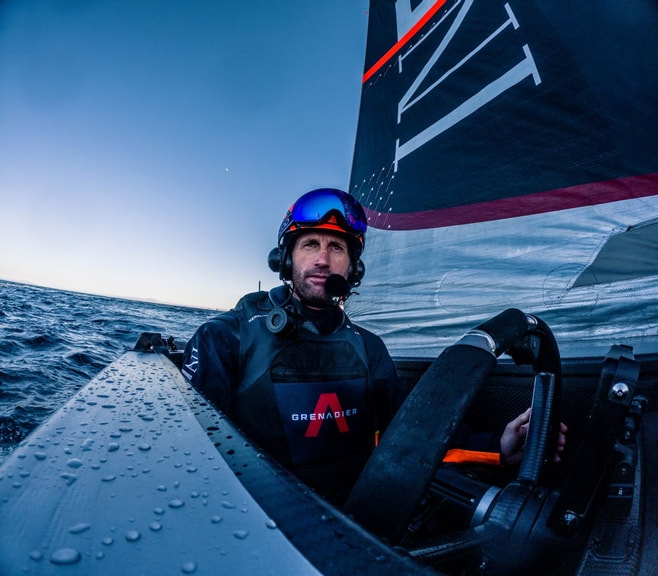
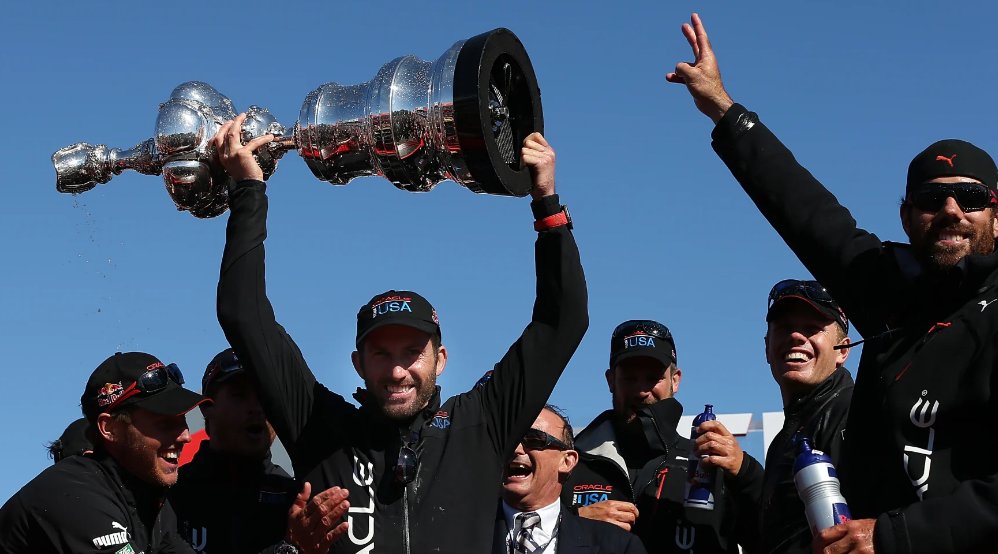
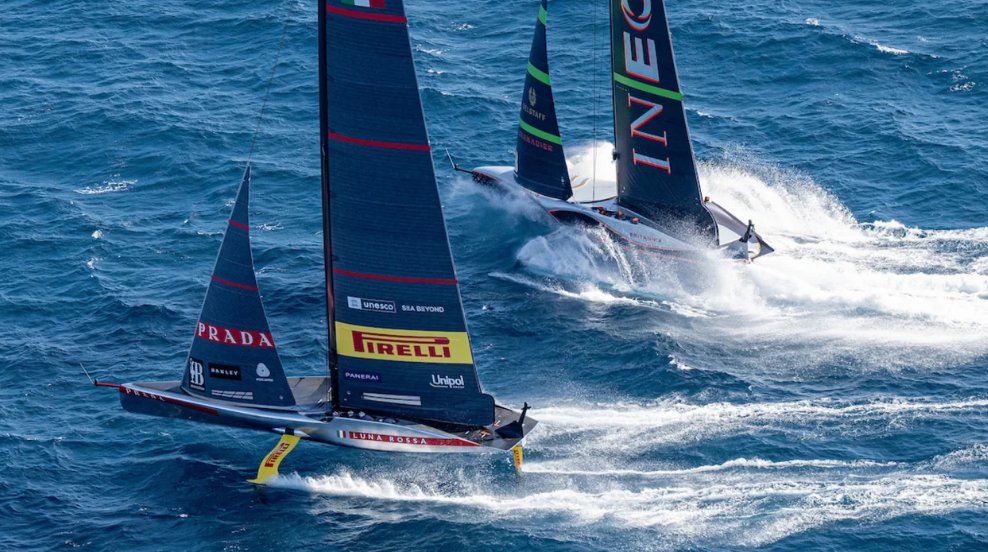






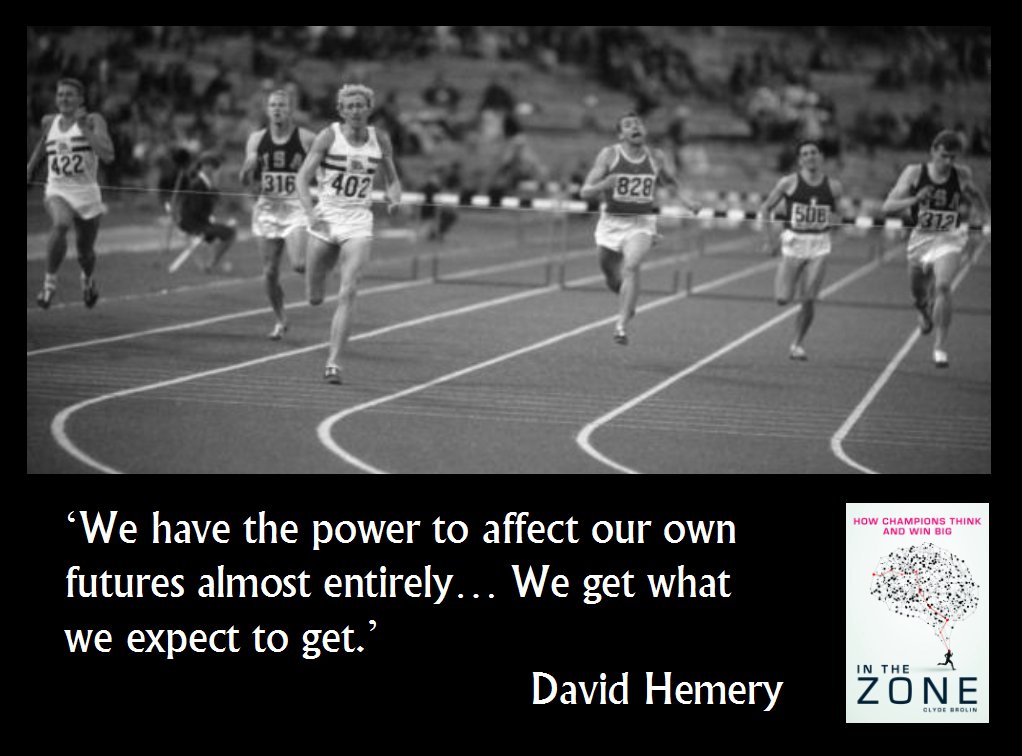

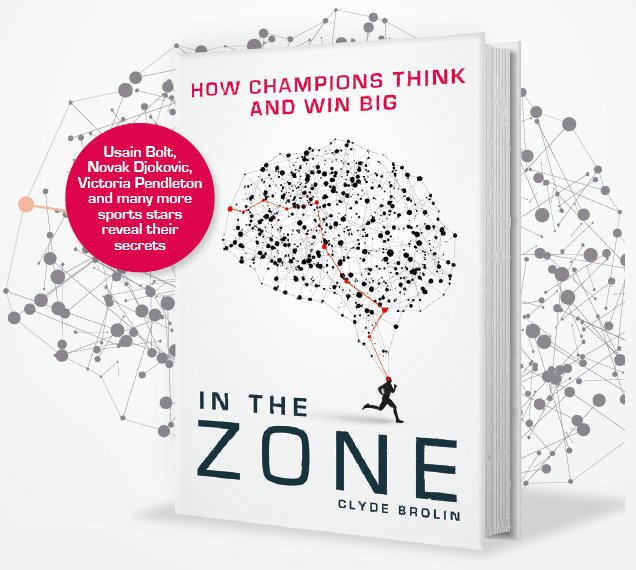
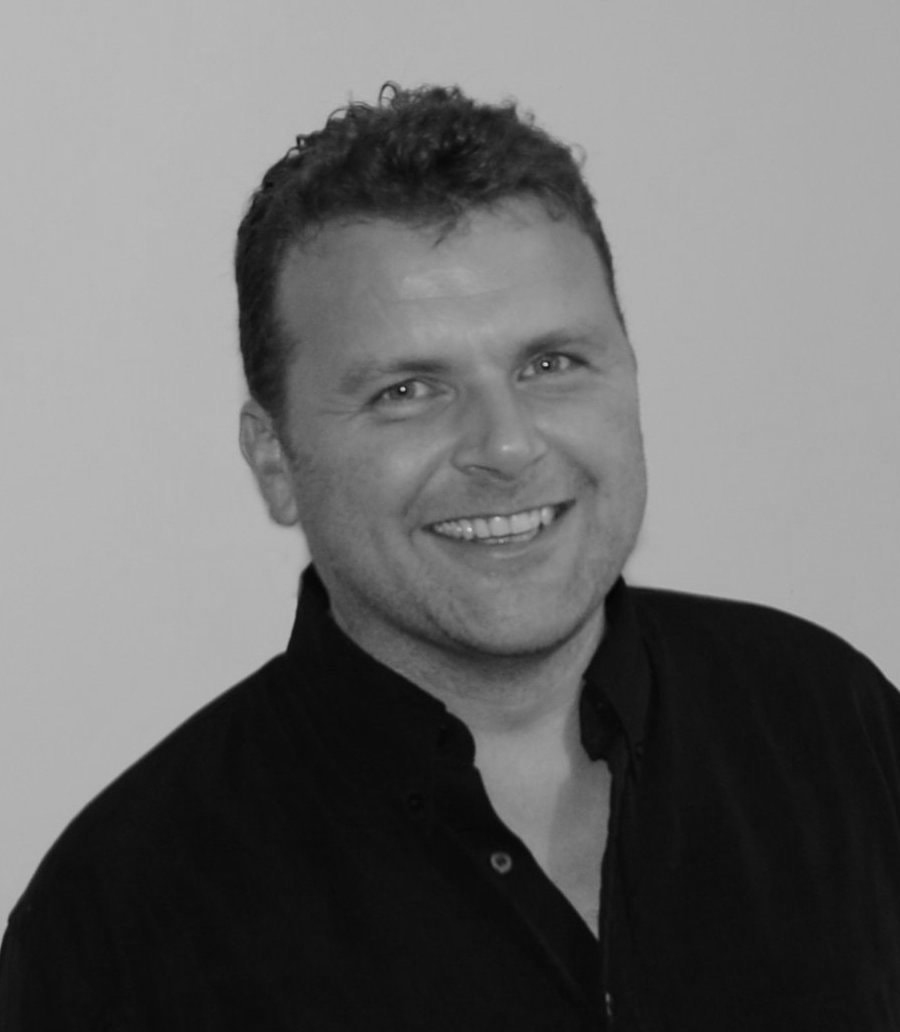
 RSS Feed
RSS Feed

